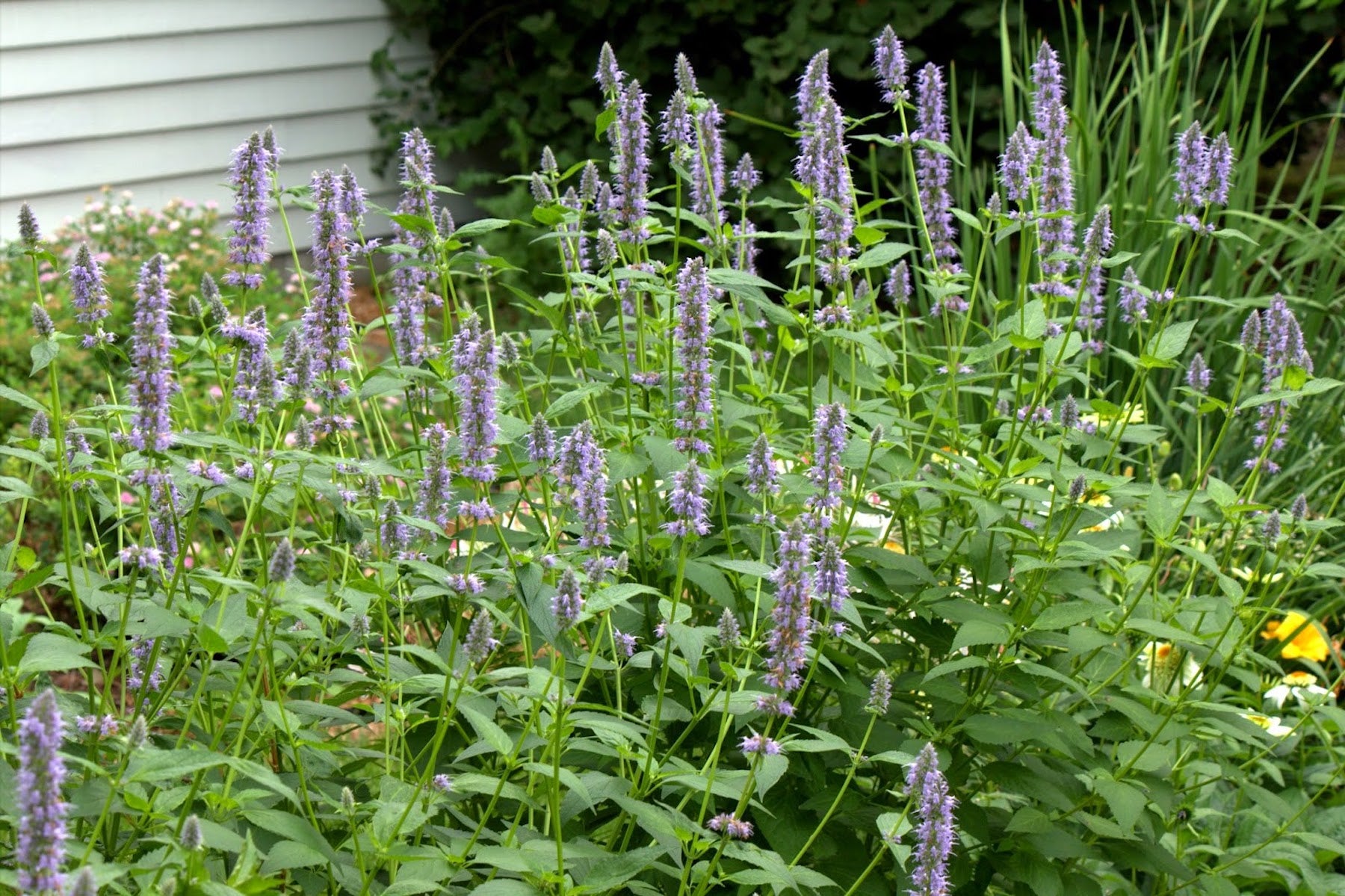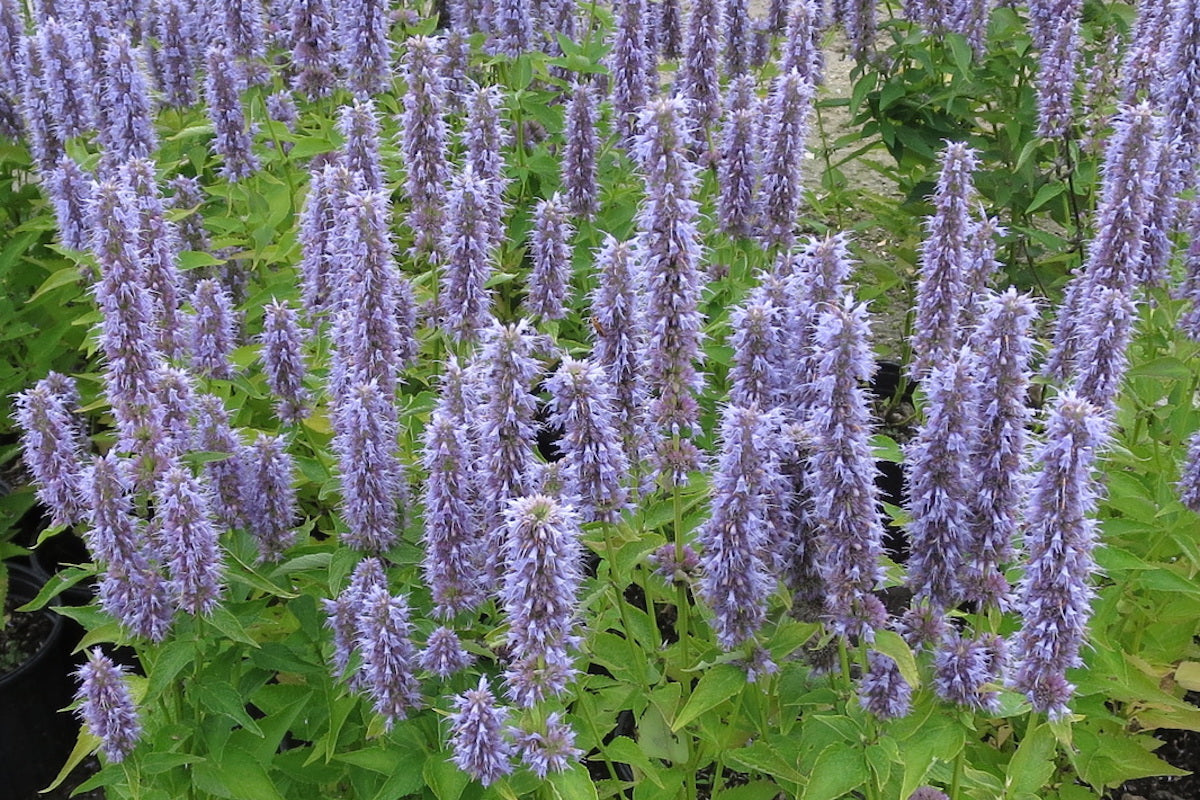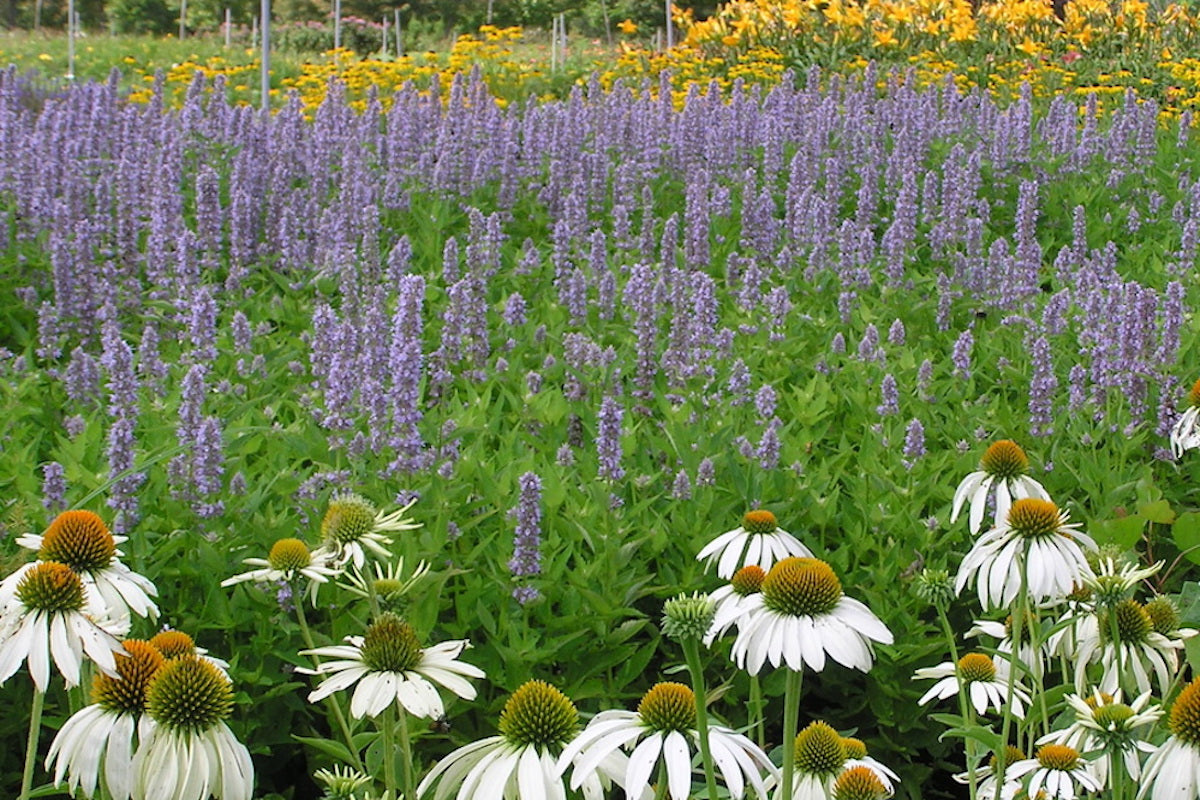Agastache 'Blue Fortune'
Approx. 0.5 litre pot
About this cultivar:
Agastache 'Blue Fortune' is a cross of the North American native Agastache foeniculum with the Korean Agastache rugosa. In spring, the strong new stalks shoot up clothed with fuzzy, aniseed scented leaves. From late spring through summer, the stems are topped with hundreds of spikes of blue-lavender flowers that attract a large array of pollinators. Very floriferous.
Won the RHS AGM in 2004 where they succinctly comment 'nice habit' in the trial notes! The RHS website lists it as hardiness H6 (-20 to -15°C), I'd be inclined to say H4 (-10 to -5°C)....but like an obedient child I have put H6 down as the answer....
- Position: Full sun, partial shade (better in full sun)
- Soil: Almost any soil
-
Flowers: July, August, September, nice seed heads into the winter
- Other features: Royal Horticultural Society Award of Garden Merit (RHS AGM), Bees and Butterflies
- Hardiness: H6 - Hardy in all of UK and northern Europe (-20 to -15°C), Fully hardy
- Habit: Clump forming, bushy
- Foliage: Deciduous
- Height: 60 to 100 cm (2 - 3.5 ft)
- Spread: 75 to 125 cm (2.5 - 4 ft)
- Time to full growth: 2 to 5 years
- Plant type: Herbaceous Perennial
- Colour: Blue, green
- Goes well with: Crocosmia, Euphorbia, Echinops, Monarda, Grasses
About this genus:
Agastache is a genus of aromatic flowering herbaceous perennial plants in the family Lamiaceae (commonly known as the mint or deadnettle or sage family). It contains 22 species, mainly native to North America. The common names of the species are a variety of fairly ambiguous and confusing "hyssops" and "mints"; as a whole the genus is known as giant hyssops or hummingbird mints. The botanical name derives from the Ancient Greek words ἄγαν (ágan) "very much" and στάχυς (stákhus) "ear of grain", describing the flower spikes. The genus was first described in 1762 by Jan Frederik Gronovius in the second edition of his controversial Flora Virginica, based on the specimens and notes of John Clayton.
The closest living relatives of Agastache are believed to be two very different lineages: One is a group of mostly Asian and usually strongly aromatic and rather robust plants. By contrast, the other lineage unites the largely scentless and low-growing. The genus Agastache seems to have originated as a North American/trans-Beringian offshoot of its radiation about 25 million years ago. Short version: there is quite a bit of variation in the genus, so it will be hard to generalise appearance, growing conditions etc…..but we’ll do it anyway.
Most species are very upright, 0.5–3 m tall, with stiff, angular stems clothed in toothed-edged, lance shaped leaves ranging from 1–15 cm long and 0.5–11 cm broad depending on the species. Upright spikes of tubular, two-lipped flowers develop at the stem tips in summer, when the flowering period is over the heads/spikes provide great winter interest. The flowers are usually white, pink, mauve, or purple, with the bracts that back the flowers being of the same or a slightly contrasting colour. Leaf tips can be sometimes be eaten and made into teas. The species rugosa has a history of use in Chinese herbology.
Most Agastache are easily grown in moist, well-drained soil and prefer a sunny position (ugh, like all plants). Some are dubiously hardy, especially in wet soils over winter, but the ones we offer should hopefully grow in a wider range of places, to the extent some are even ubiquitous in garden centres. Often touted as drought tolerate. Good planting partners? ‘The partnership of crocosmia, agastache and euphorbia is a smouldering late-season show-stopper’ says Val Bourne in a Telegraph.co.uk article. You can also try grasses, Echinops (see photo), and Monarda.










